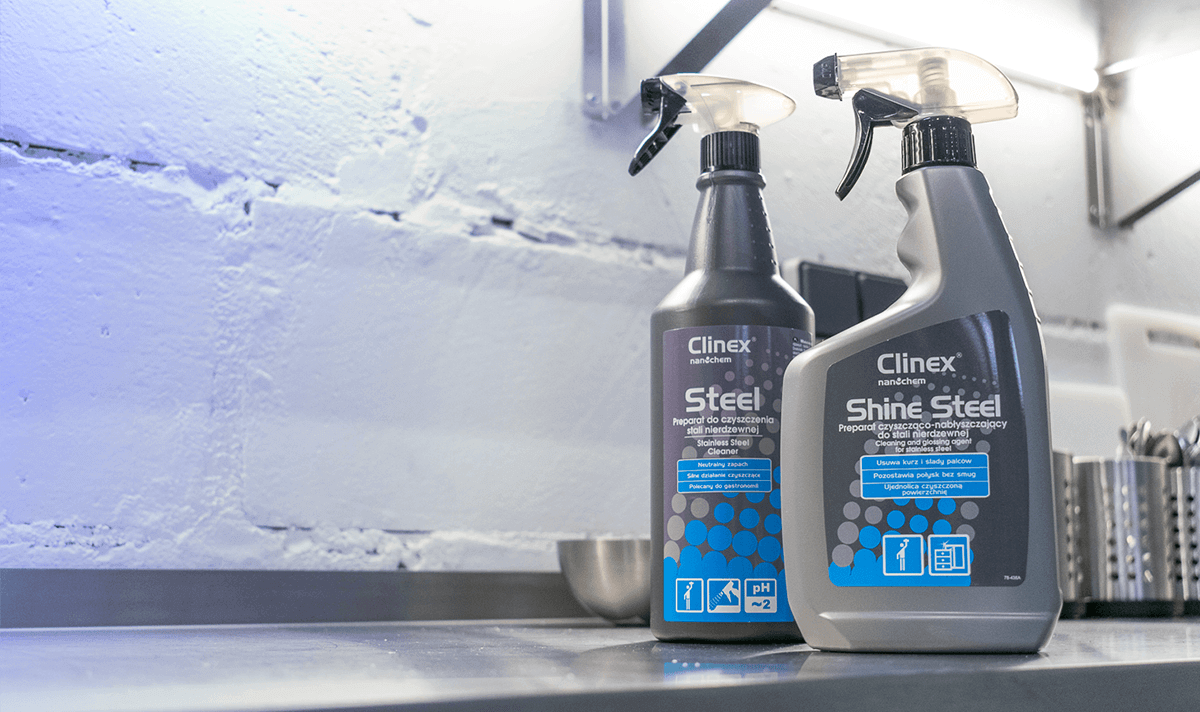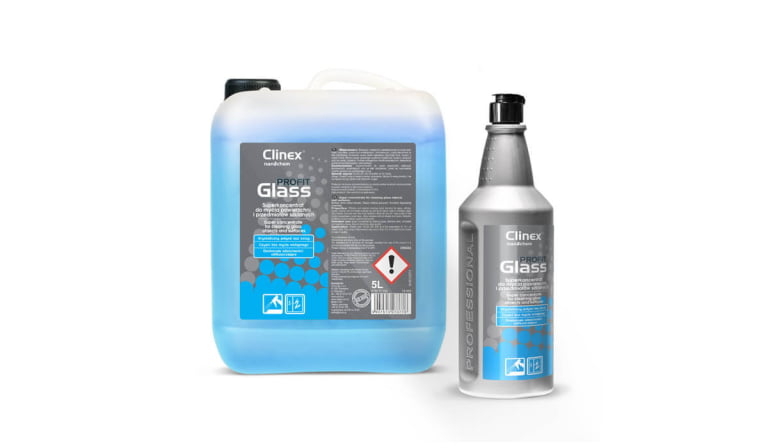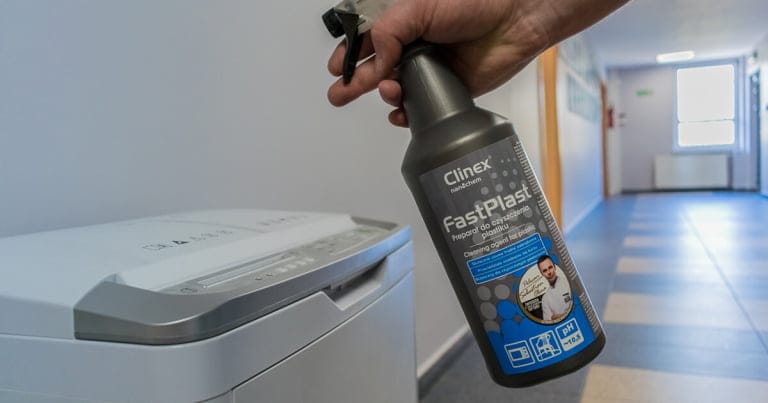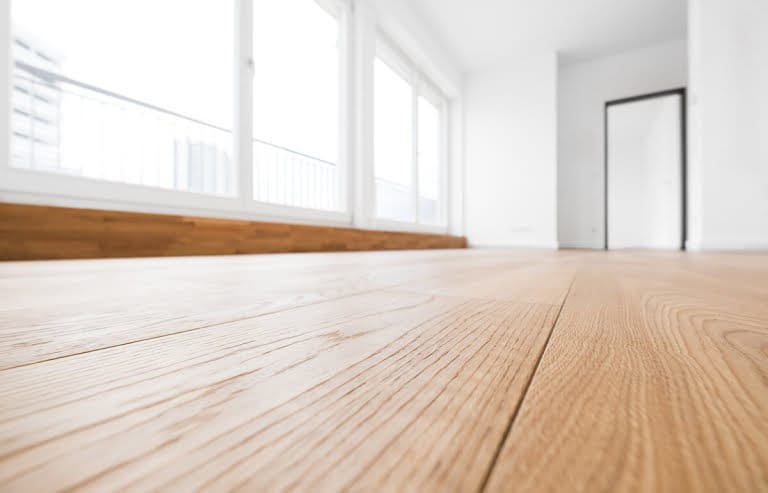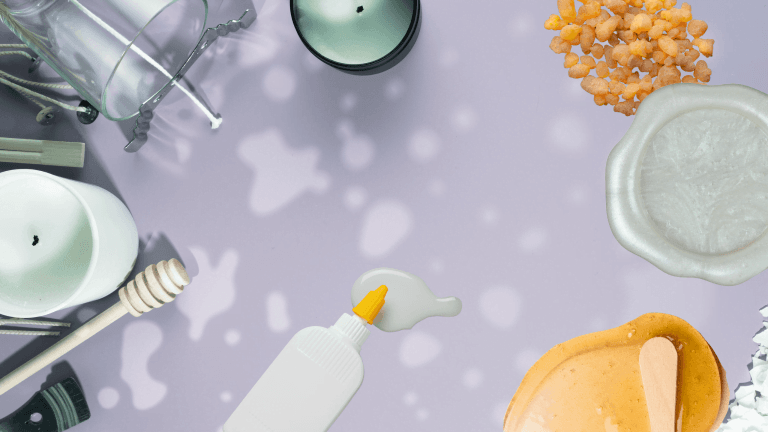Stainless steel is a very durable material, resistant to high temperature and rust. These are the main properties that make it widely used in industry and gastronomy. This is why it is so important to keep stainless steel surfaces in perfect condition. For this purpose, it is recommended to use professional cleaning products for cleaning and care. This will ensure a longer service life for devices and surfaces made of this material.
What is stainless steel?
Stainless steel is a type of steel that is resistant to weather conditions and a wide pH range. Anti-corrosion properties in steel are achieved due to the increased content of chromium, the concentration of which in such steel is not less than 12%. Thanks to such a high chromium content, such surfaces are resistant to the oxidizing effects of aggressive agents. Chromium reacts with oxygen in the air. It creates a layer of chromium oxide on the steel surface, protecting it against factors affecting corrosion. The resistance of steel depends on the alloy composition, structure and surface condition. When stainless steel surfaces corrode, so-called pitting corrosion occurs. It selectively damages the surface, creating visible holes or pits in some places. Halogen ions, especially chloride ions, contribute to the formation of such corrosion. It is necessary to clean it regularly to eliminate any deposits and deposits that arise as a result of the evaporation of chloride solutions, because such changes influence the formation of corrosion.
Stainless steel is characterized by high durability and retains its aesthetic values for years. However, for it to serve its purpose, it must be cared for regularly. Stainless steel, like all other materials used in various industries, is exposed to many factors that have a destructive impact on it. Fortunately, the market offers a wide range of products that allow for thorough cleaning. Many of them are enriched with additives that extend its life.
Types of steel surfaces
Contrary to appearances, steel is an extremely interesting material, especially the one that is resistant to corrosion. However, before deciding to make a device out of it or cover some surface with it, e.g. a table top, it is worth obtaining as much information about it as possible. Doing so will help you make the right decision. Steel, although seemingly the same, can surprise many people in terms of its properties. Currently, there are several types of stainless steel. Each of them is characterized by a certain difference. Therefore, it can be concluded that the steel of steel is uneven. Let’s look at some of the most popular types and see what distinguishing features each of them has.
In terms of structure, corrosion-resistant steels can be divided into ferritic steel, i.e. with limited corrosion resistance due to the low chromium content. In the case of this group, instead of stainless steel, we can often hear the term steel with increased corrosion resistance.
Austenitic, martensitic, austenitic-ferritic steel
Austenitic steel – with high corrosion resistance, which increases with the increase in the concentration of alloy additives such as chromium or molybdenum. This is one of the most interesting types of steel because its name comes from the concept of “austenite”, which is a structural component of steel named after the British metallurgist, Sir William Chandler Roberts-Austen. The distinguishing feature of this steel is that it is highly resistant to invasive environmental conditions.
Martensitic steel – produced in the process of hardening (quick cooling) of austenitic steel. It is characterized by the highest abrasion resistance and high durability. This type of steel is used in many minimally invasive environments. It is usually used to make screws, valves and pins. In addition, it is used in the production of, among others, surgical instruments.
The last group of steel
The last group are austenitic-ferritic steels, the so-called Duplex. These are double steels, which are similar to ferritic steels in terms of processing and physical properties. However, in terms of chemical composition and excellent corrosion resistance, it is comparable to austenitic steels. Chemically, we can distinguish chromium, chromium-nickel, and chromium-nickel steels with other alloying elements.
Cleaning stainless steel surfaces
When cleaning stainless steel surfaces, we must remember that abrasive cleaning agents should not be used because they may scratch the surface. Cleaning can be divided into daily washing and thorough cleaning. Both cleaning processes require appropriate preparation in advance. It is worth familiarizing yourself with the details surrounding daily and thorough cleaning. Performing such activities correctly will be a source of satisfaction. The steel will retain its durability and visual values, which will, to some extent, translate into the aesthetics of the room in which the stainless steel is used.
Thorough cleaning of stainless steel surfaces
In case of heavier dirt, lime deposits, glue residues or previously accumulated cleaning agents, it is recommended to perform thorough cleaning. To remove this type of contamination, use a preparation that will quickly and effectively remove dirt without damaging the cleaned surface. A very good choice will be Clinex Steel , which has cleaning and degreasing properties, removes scale, rust, stubborn dirt and grease. After thorough washing, remember to neutralize. Rinse the surface with plenty of water and then wipe it dry with a cloth or paper towel. An important element in this process is the selection of the appropriate preparation. Only professional cleaning products are able to give steel the desired appearance. Additionally, remember to wipe the steel thoroughly. Although there should not be white streaks or other marks that occur when using less professional cleaning products, each cleaning agent is a chemical product and may have a negative effect, for example, when in contact with human skin.
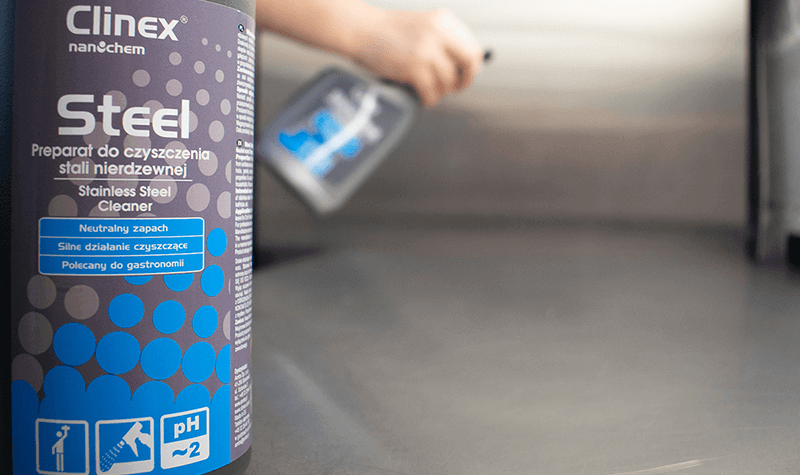
Daily cleaning of stainless steel surfaces
For daily cleaning and care, we can recommend Clinex Shine Steel . It is a preparation for cleaning and maintaining stainless steel surfaces. It is characterized by easy application, very short drying time and no greasy or oily streaks after application. This is definitely one of the fastest-acting stainless steel cleaners. It saves time and energy.
In the case of both products, remember to read the information provided by the manufacturer on the label before using them. In this case, the method of use is particularly important, because having a professional remedy is only half the battle. The other half is its correct application. With this approach and careful cleaning in accordance with the recommendations presented above, you will certainly achieve a satisfactory result.
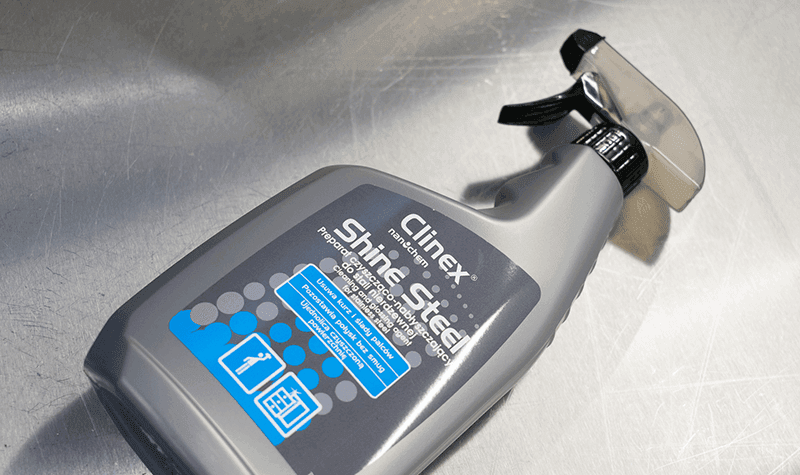
What should you remember when using stainless steel care products?
When using cleaning and care products for stainless steel, remember that such products must not be used on surfaces in contact with food because they may contaminate food. This is a rule that should never be ignored. Cleaning individual materials, such as stainless steel, requires the use of agents with a complex chemical composition, with which food should not come into contact. That is why the process of thoroughly wiping the washed stainless steel surface is so important.
Conclusions
- Stainless steel is resistant to weather conditions and a wide pH range.
- The properties of stainless steel make it a material often used in gastronomy and industry.
- Stainless steel is characterized by an increased chromium content.
- Factors affecting the resistance of steel include alloy composition, structure, and surface condition.
- Lack of regular care of stainless steel may result in spot corrosion.
- Regular cleaning of stainless steel will increase its durability and visual aspects.
- There are several types of stainless steel.
- Stainless steel should not be cleaned with agents that have abrasive properties.
- When caring for stainless steel, you can distinguish between thorough cleaning and daily cleaning.
- Effective ground cleaning can be performed with Clinex Steel.
- Rinse after primary cleaning.
- Clinex Shine Steel is recommended for daily care of stainless steel, as it is very effective and quick to work.
- It is not recommended to allow agents dedicated to cleaning stainless steel to come into contact with food.

